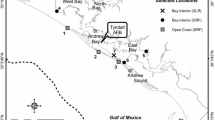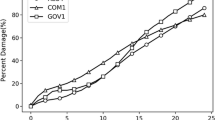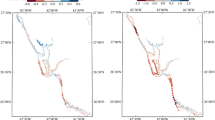Abstract
This paper reviews historical methods for estimating surge hazards and concludes that the class of solutions produced with Joint Probability Method (JPM) solutions provides a much more stable estimate of hazard levels than alternative methods. We proceed to describe changes in our understanding of the winds in hurricanes approaching a coast and the physics of surge generation that have required recent modifications to procedures utilized in earlier JPM studies. Of critical importance to the accuracy of hazard estimates is the ability to maintain a high level of fidelity in the numerical simulations while allowing for a sufficient number of simulations to populate the joint probability matrices for the surges. To accomplish this, it is important to maximize the information content in the sample storm set to be simulated. This paper introduces the fundamentals of a method based on the functional specification of the surge response for this purpose, along with an example of its application in the New Orleans area. A companion paper in this special issue (Irish et al. 2009) provides details of the portion of this new method related to interpolating/extrapolating along spatial dimensions.








Similar content being viewed by others
References
Agbley SK, Basco DR (2008) An evaluation of storm surge frequency-of-occurrence estimators. Proceedings of the ASCE conference on Solutions to Coastal Disasters, April 13–16, 2008, Turtle Bay, Hawaii, pp 185–197
Borgman LE, Miller M, Butler L, Reinhard R (1992) Empirical simulation of future hurricane storm histories as a tool in engineering and economic analysis. Proceedings of the fifth international conference on civil engineering in the Ocean, ASCE, November, College Station, Texas
Cardone VJ, Pierson WJ, Ward EG (1976) Hindcasting the directional spectra of hurricane generated waves. J Pet Technol 28:385–394. doi:10.2118/5484-PA
Chouinard LE, Liu C, Cooper CK (1997) A model for the severity of hurricanes in the Gulf of Mexico. J Waterw Harb Coast Eng ASCE 123:113–119
Collins JI, Viehmann MJ (1971) A simplified model for hurricane wind fields, Paper 1346. Offshore Technology Conference, Houston, TX
Gringorten II (1962) A simplified method of estimating extreme values from data samples. J Appl Meteorol 2:82–89. doi:10.1175/1520-0450(1963)002<0082:ASMOEE>2.0.CO;2
Gringorten II (1963) Extreme-value statistics in meteorology—a method of application, Air Force Surveys in Geophysics No. 125, Air Force Cambridge Research Center
Gumbel E (1959) Statistics of extremes. Columbia University Press, New York
Ho FP, Myers VA (1975) Joint probability method of tide frequency analysis applied to Apalachicola Bay and St. George Sound, Florida. NOAA Tech. Rep. NWS 18, 43 pp
Ho FP, Su JC, Hanevich KL, Smith RJ, Richards FP (1987) Hurricane climatology for the Atlantic and Gulf Coasts of the United States. NOAA Tech. Rep. NWS 38, completed under agreement EMW-84-E-1589 for FEMA, 194 pp
Holland GJ (1980) An analytic model of the wind and pressure profiles in hurricanes. Mon Weather Rev 108:1212–1218. doi:10.1175/1520-0493(1980)108<1212:AAMOTW>2.0.CO;2
Irish JL, Resio DT, Ratcliff JJ (2008) The influence of storm size on hurricane surges. J Phys Oceanogr 38:2003–2013
Irish JL, Resio DT, Cialone MA (2009) A surge response function approach to coastal hazard assessment—Part 2: quantification of spatial attributes of response functions. Nat Hazards. doi:10.1007/s11069-009-9381-4
Kimball SK (2006) A modeling study of hurricane landfalls in a dry environment. Mon Weather Rev 134:1901–1918. doi:10.1175/MWR3155.1
Myers VA (1975) Storm tide frequencies on the South Carolina Coast. NOAA Tech. Rep. NWS-16, 79 pp
Niedoroda AW, Resio DT, Toro G, Divoky D and C Reed (2008) Efficient strategies for the joint probability evaluation of storm surge hazards. In: Proceedings of the ASCE conference on Solutions to Coastal Disasters, April 13–16, 2008, Turtle Bay, Hawaii, pp 242–255
Resio DT, Westerink JJ (2008) Modeling the physics of storm surges. Phys Today (Sep):33–38. doi:10.1063/1.2982120
Scheffner N, Borgman L, Mark D (1993) Empirical simulation technique applications to a tropical storm surge frequency analysis fo the coast of Delaware. Proceedings of the third international conference on estuarine and coastal modeling
Schwerdt RW, Ho FP, Watkins RR (1979) Meteorological criteria for Standard Project Hurricane and probable maximum hurricane windfields, Gulf and East Coasts of the United States. Tech. Rep. NOAA-TR-NWS-23, National Oceanic and Atmospheric Administration
Thompson EF, Cardone VJ (1996) Practical modeling of hurricane surface wind fields. ASCE J Waterw Port Coast Ocean Eng 122(4):195–205. doi:10.1061/(ASCE)0733-950X(1996)122:4(195)
U.S. Department of Commerce (1959) Meteorological considerations pertinent to Standard Project Hurricane, Atlantic and Gulf Coasts of the United States. National Hurricane Research Project, Rep. 33
U.S. Department of Commerce (1979) Meteorological criteria for standard project hurricane and probable maximum hurricane wind fields, Gulf and East Coasts of the United States. NOAA Tech Rep. NWS 23
U.S. Weather Bureau (1965) Standard project hurricane wind field patterns (revised) to replace existing patterns in the NHRP No. 33, for Zones B and C, Memo. HUR 7-84
Author information
Authors and Affiliations
Corresponding author
Rights and permissions
About this article
Cite this article
Resio, D.T., Irish, J. & Cialone, M. A surge response function approach to coastal hazard assessment – part 1: basic concepts. Nat Hazards 51, 163–182 (2009). https://doi.org/10.1007/s11069-009-9379-y
Received:
Accepted:
Published:
Issue Date:
DOI: https://doi.org/10.1007/s11069-009-9379-y




